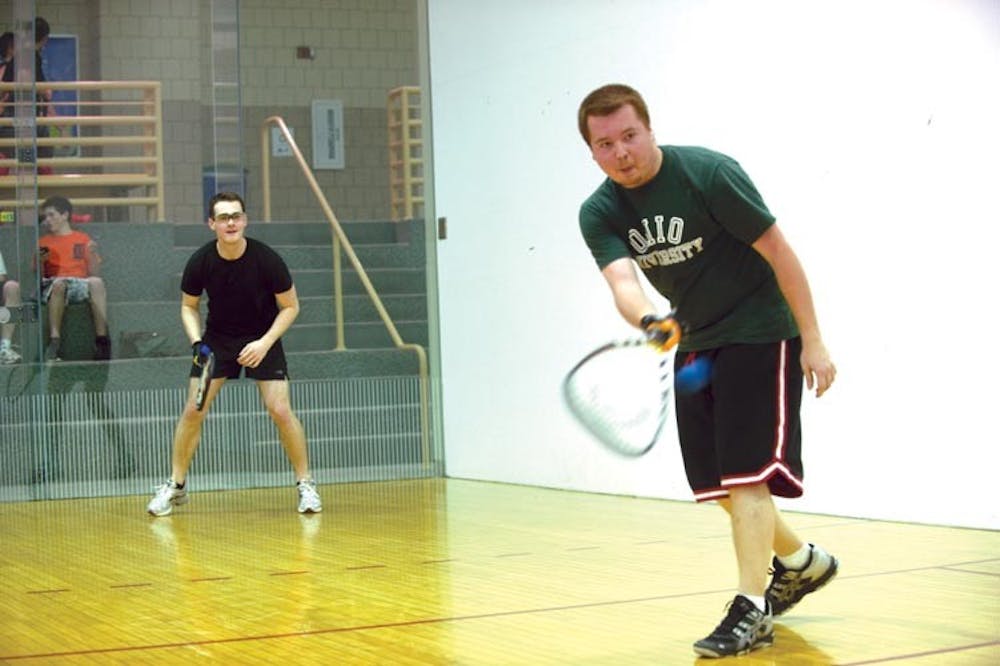In 1950, Joseph Sobeck sought to change the world by introducing a fast-paced sport that was easy to play, based off of the rules of handball, squash, and paddleball. It was then that the game of racquetball was born.
Sixty years later, Ohio University’s Ping Center provides a space for those who desire to crush a hollow rubber ball against a stark white wall.
The object of the game is to hit the ball against the wall and not let it bounce twice on the floor before returning an opponent’s shot. A point is given when a player cannot return the ball before it bounces twice. Generally, the winner must score 15 points, and some leagues require games to be decided by at least two points.
“It’s kind of like tennis, but you’re both on the same side of the court,” said Zack Roman, a sophomore studying psychology and racquetball enthusiast. “You can practically picture that you’re hitting through the wall to your opponent.”
Those who play have different reasons for picking up the sport. While Roman was looking for an activity that would occupy him and his friends during Winter Quarter, graduate student Matt Starkey had different motivations.
“I play because you can really crush the ball and it still counts,” Starkey said. “You’re not really trying to restrain yourself.”
While unleashing a powerful serve, one has to prepare for the ball to fly back into his or her face. There is an unknown element of danger to the seemingly harmless game and proper equipment, such as gloves and goggles, is needed for serious players.
“It’s easy to get hit pretty hard in racquetball if you’re not careful,” Starkey said. “I got hit in the eye and I thought, ‘Yeah, I’m wearing goggles now.’”
Roman, on the other hand, tends to live his racquetball career on the wild side.
“I’ve been hit and I’ve gotten a welt or two,” Roman said. “It’s recommended that you have eye protection, but I don’t because I don’t think I will — if I play right.”
Many players borrow racquets, gloves, balls, and goggles from the equipment desk at Ping, but others invest in their own equipment, and that can become expensive very quickly.
“Just like any sport, you can play cheap because honestly, all you need is a racquet and some balls,” Roman said. “But if you want to get into the hardcore equipment, it can go up into the thousands.”
ch203310@ohiou.edu






